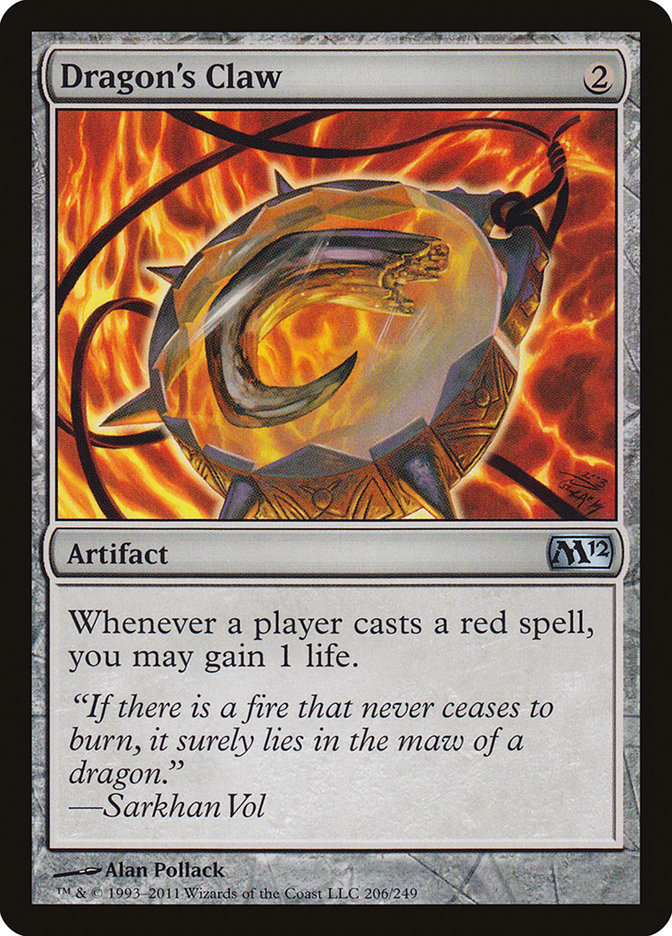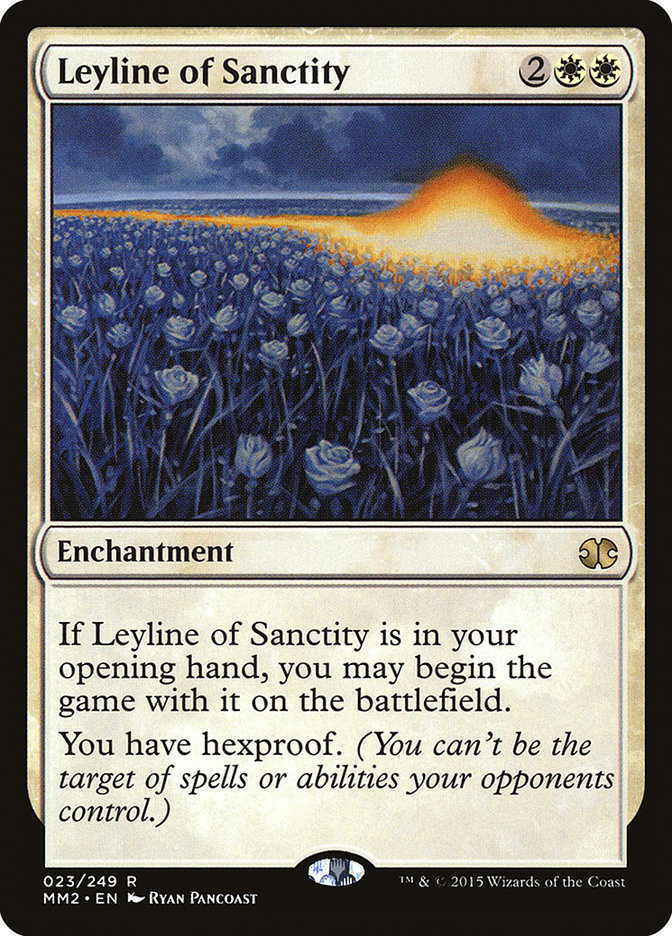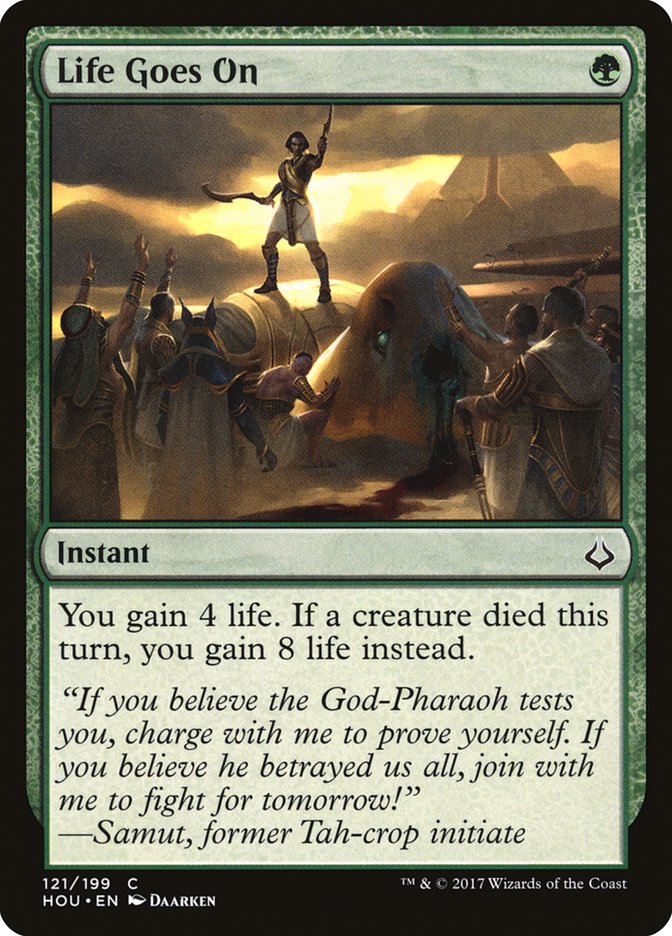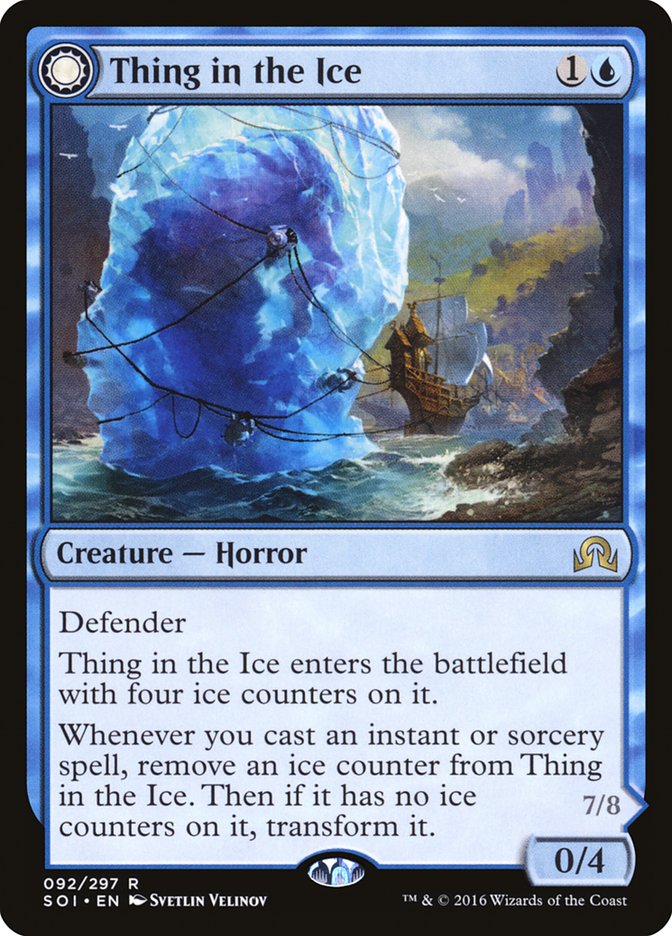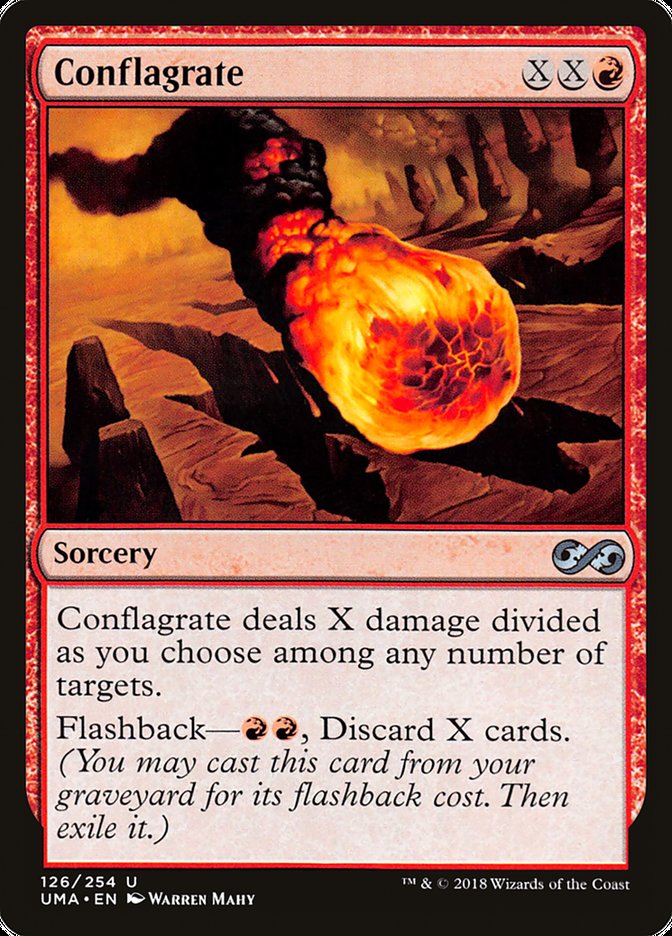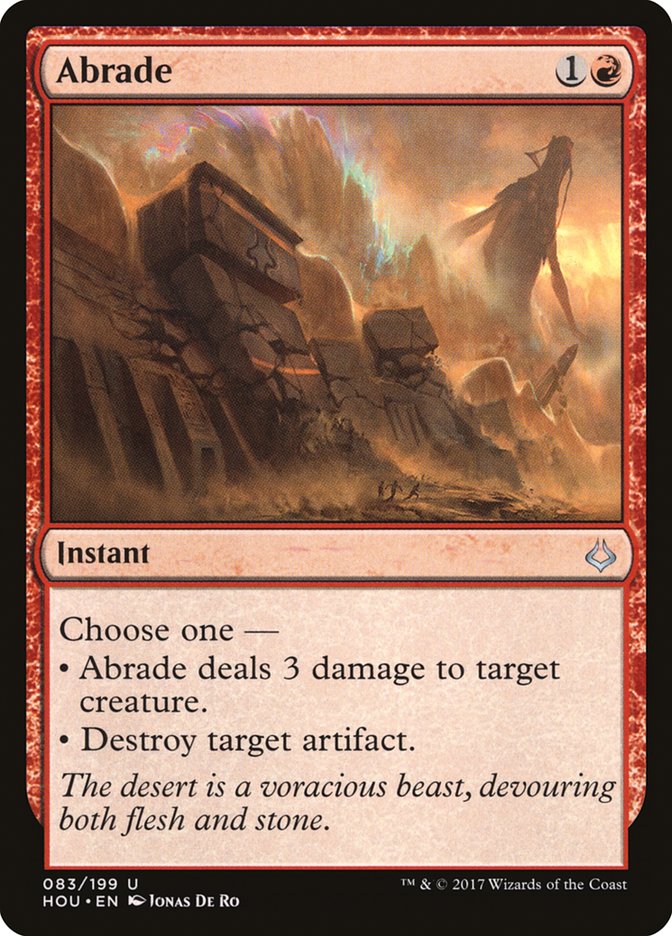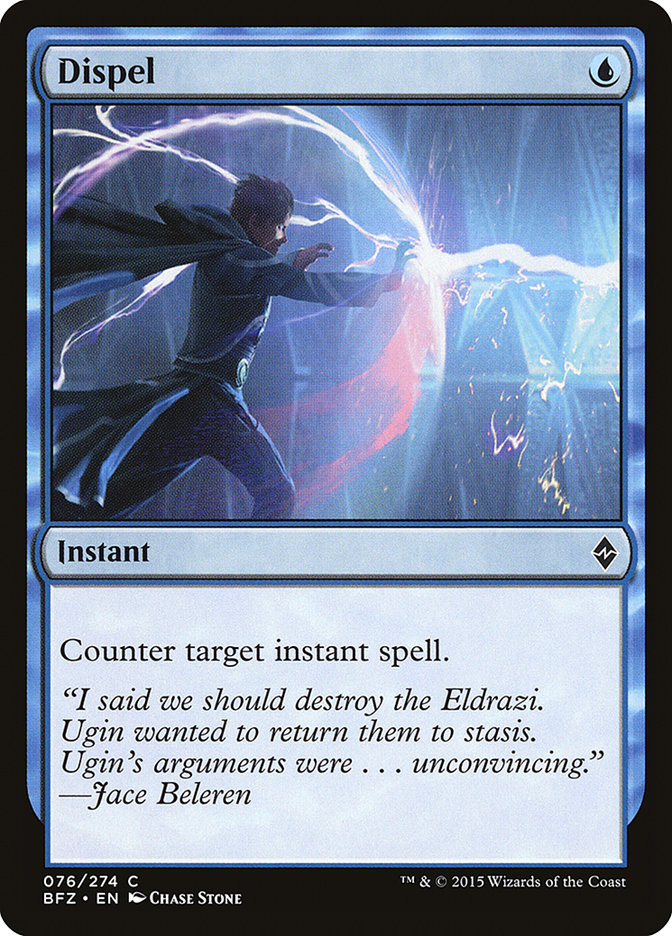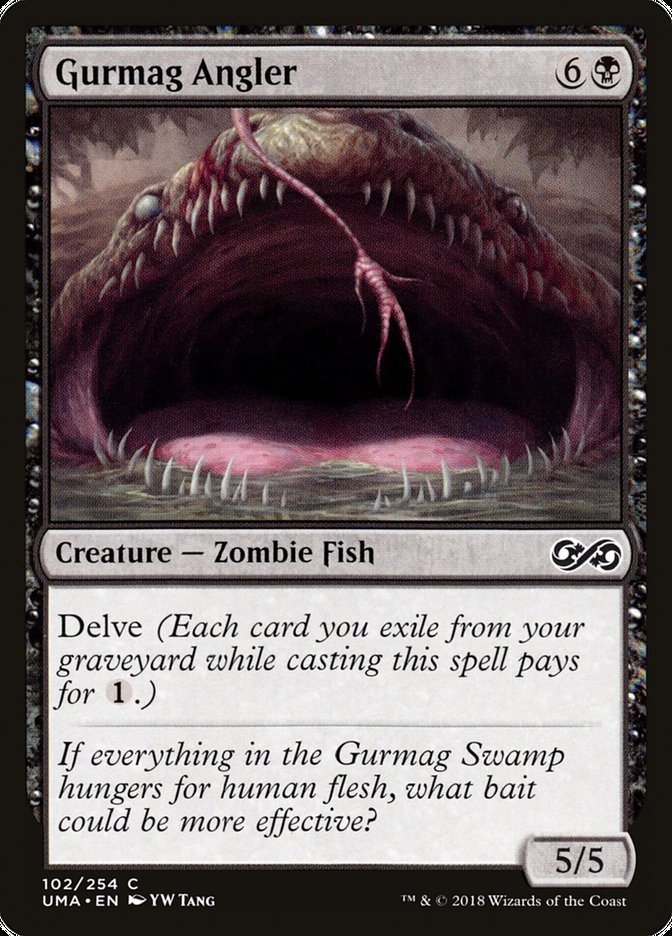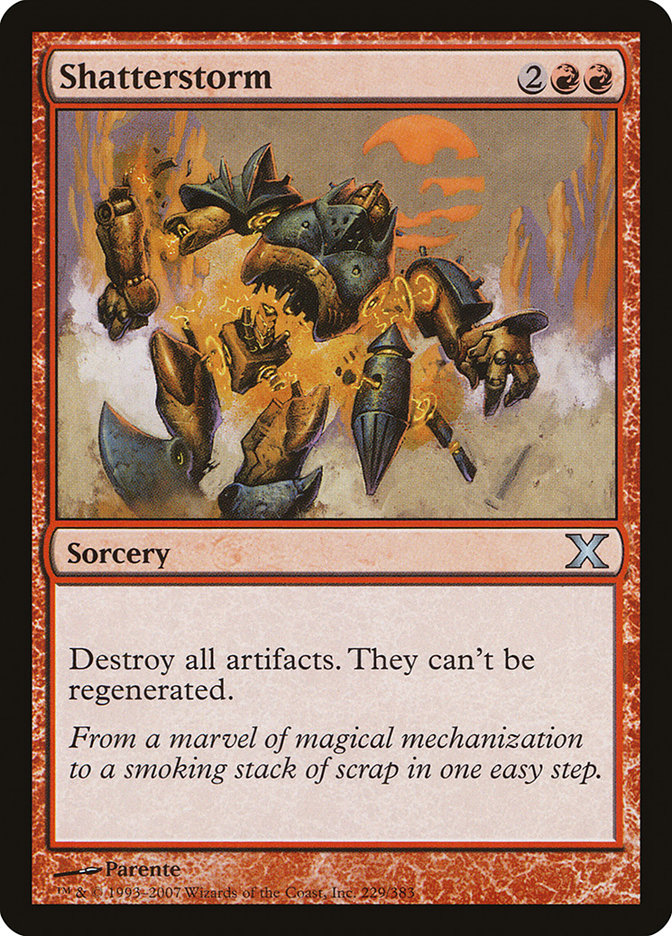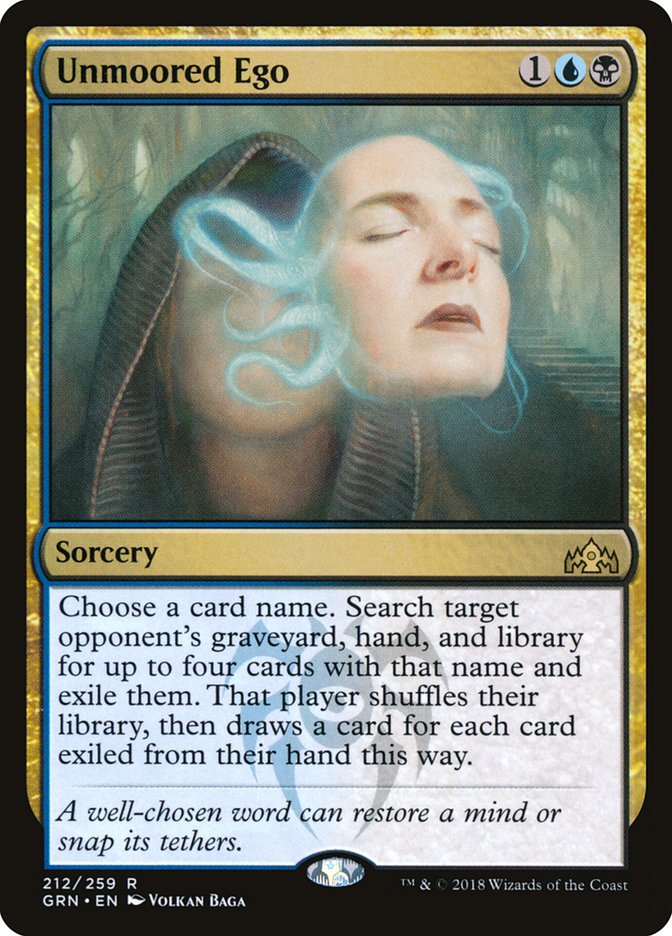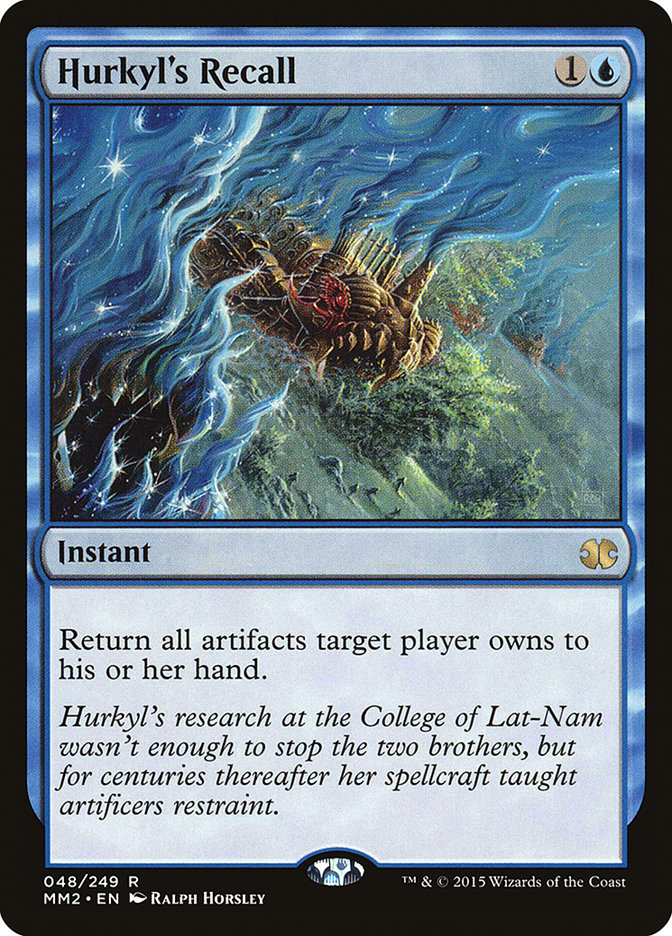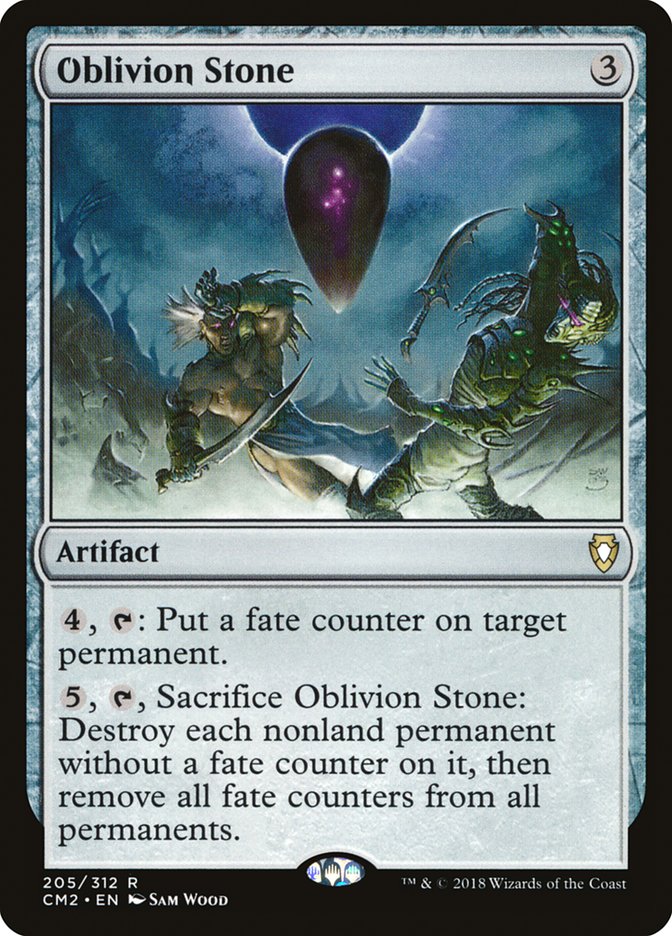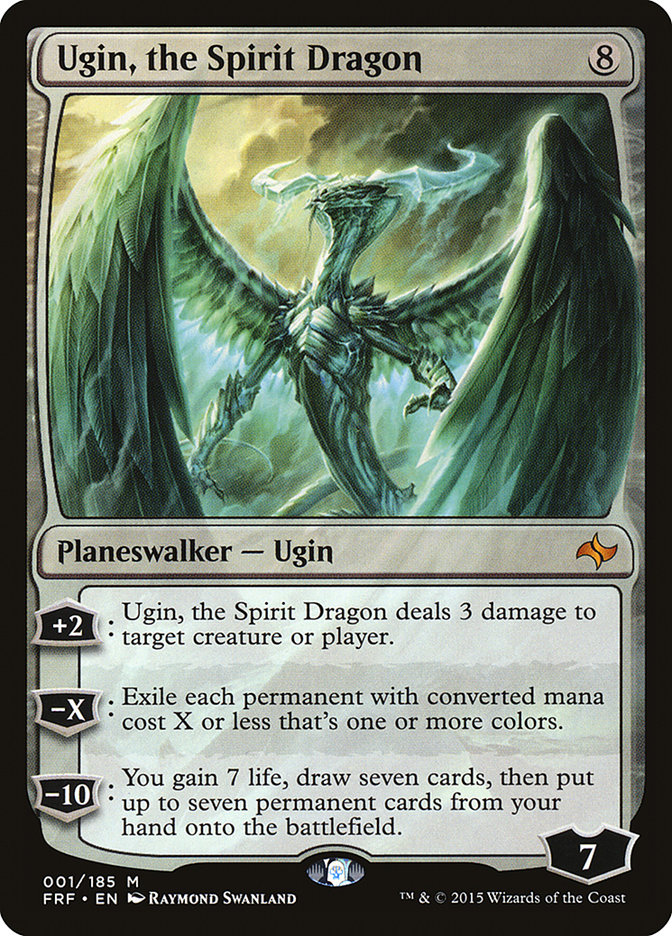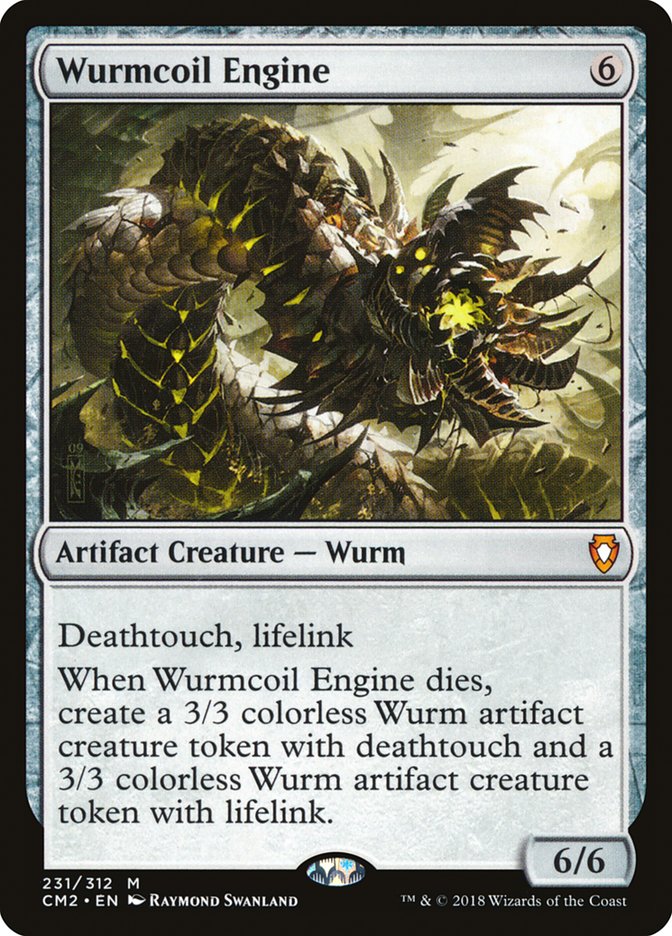Last weekend was Izzet Phoenix’s biggest test to date, with three major individual Modern tournaments occurring on the same weekend and Izzet Phoenix as the clear deck to beat in the metagame. Suffice it to say that the deck passed this test with ease, taking about twenty percent of the combined Day 2 metagames from the three tournaments, a third of the 24 spots in the combined Top 8s, and two-thirds of the trophies.
Creatures (12)
Lands (18)
Spells (30)

Creatures (10)
Lands (18)
Spells (32)

Creatures (12)
Lands (18)
Spells (30)

Despite having a giant target on its back, Izzet Phoenix was more dominant than ever, which can only mean one thing: A lot of people brought decks that they thought were favored against Izzet Phoenix, and most or all of them were wrong.
This has happened countless times over Magic’s history. So many players thought their pet deck beat CawBlade or Faeries or Affinity. There were “hate” cards for these decks like Volcanic Fallout and Viridian Shaman that saw maindeck play in order to suppress these decks, and the reality was it wasn’t enough. Hate cards aren’t universally applicable and the best decks in Magic’s history are those flexible enough to adapt to obvious sideboard cards.
I went over some common misconceptions about Izzet Phoenix last week, and one of those is that it’s primarily a linear and/or graveyard deck. Izzet Phoenix can dominate and win in the early, middle, and late stages of the game and there isn’t any specific haymaker you can throw at it to shut it down, the way you can with Leyline of the Void or Rest in Peace against Dredge.
This week, I want to look at some of the decks that are popularly thought to be favored against Izzet Phoenix, some heavily so, and go over why the matchup isn’t as bad as the hive mind says, which helps explain Izzet Phoenix’s dominance on a weekend when these decks should’ve been better-positioned and more successful. Along the way I’ll go over why the decks look better in perception than reality and how you should approach them if you’re joining the dark side and registering some Phoenixes at your next Modern tournament.
Burn
Creatures (13)
Lands (19)
Spells (29)
- 4 Lightning Bolt
- 4 Lava Spike
- 4 Lightning Helix
- 1 Rift Bolt
- 4 Searing Blaze
- 4 Boros Charm
- 4 Light Up the Stage
- 4 Skewer the Critics
Sideboard

Burn is the most commonly cited bad matchup for Izzet Phoenix, and I have to admit I played a significant part in that, since it was my go-to answer to the “What do you not want to play against?” question when I first played the deck. I had Collective Brutality on the splash to help that matchup, and since then we’ve seen Izzet Phoenix players resort to even more desperate measures with cards like Dragon’s Claw, Leyline of Sanctity, and Life Goes On.
After months of playing the matchup, I am now convinced that not only are those hate cards unnecessary, but the Burn matchup is actively favorable for Izzet Phoenix. A lot of the games come down to the top of the Burn player’s deck, which creates a scary feeling that you aren’t in control of the outcome, but over time the Izzet player should come out on top more often than not. Also, many of the games Burn wins in the matchup are blowouts, while Izzet almost always wins at five or less life, giving the illusion that Burn is better than it actually is. This illusion and similar ones will be a common thread in the decks today.
The keys to beating Burn are similar for all but the most linear decks, and it’s a three-step process.
Step 1: Establish a clock.
Step 2: Trade as often as possible without compromising that clock.
Step 3: Cut off as many live draws from the Burn player’s deck as possible.
Izzet Phoenix is well-equipped to implement this plan, especially in the post-sideboard games. For this matchup in particular, Eidolon of the Great Revel has some added importance, and I’m willing to take a hit or two from Goblin Guide if I don’t have two removal spells and can instead use that time to set up a Thing in the Ice or Arclight Phoenix. As long as Eidolon of the Great Revel is dealt with, you’re favored in the race.
The other tricky tactical element of the matchup is whether or not to block an attacking Goblin Guide or Monastery Swiftspear with a Thing in the Ice. The key variable in this decision is how interactive your hand is versus how threat-dense it is. An interactive hand can more readily take two damage in order to preserve the creature on the battlefield, while the threat-dense hand is happy to use its first creature to trade for a burn spell, knowing that there is another one for the following turn. When in doubt, know that establishing a clock is Step 1 of the plan and keep your Thing in the Ice around.
As for Step 3, the only way we have to do that besides killing them quickly is Blood Moon. On paper it’s an awkward card against a heavy red deck, but any Boros Charm or Lightning Helix left stranded is a huge win and they often bring more cards it shuts off, namely Path to Exile and Cindervines. You’re also already incentivized to fetch for basic lands to save life, so it doesn’t hurt you much as long as you can keep the battlefield free of creatures so you aren’t punished too heavily for tapping out.
The Rakdos lists of Burn are less affected by Blood Moon, to the point where I don’t bring it in on the draw and only consider one on the play, but it seems like those were a flash in the pan, and most Burn lists I see are back to the typical Boros/Naya configuration.
Honestly, I think Burn was significantly overhyped due to the printing of Light Up the Stage and Skewer the Critics. The latter seems to be adopted by Boros builds, but Light Up the Stage failed to live up to expectations, and the deck’s poor matchup against Dredge is a significant hurdle. I saw a lot of it around a month ago, but at this point it has receded to its typical levels in the metagame and not much of a threat. If you haven’t already, you should be cutting your stinky, stinky Dragon’s Claws.
Dredge
Creatures (18)
Lands (19)
Spells (23)

After Creeping Chill was printed, Dredge enjoyed a brief resurgence, dominating a Modern Open in Dallas last October before an influx of hate and the rise of Ironworks kept it in check. It reemerged at Grand Prix Los Angeles earlier this year, rivaling Izzet Phoenix in both Top 8 slots and Day 2 metagame share.
Dredge certainly has the power to hang with Izzet Phoenix, and indeed the rest of the Modern metagame. It also benefits from the rise of Phoenix, which has caused Surgical Extraction to push out the graveyard hate cards that have historically been more effective against Dredge, though Extraction moving into maindecks is worrisome.
My primary issue with Dredge is its decreased consistency post-Creeping Chill. To fit the new card in, concessions had to be made on both the dredgers and land counts, and so the deck has more hands that simply do nothing or are dependent on finding a second dredger or land off a Faithless Looting, or else it will be forced to delay its gameplan and take natural draws. These consistency issues are mitigated by the lifegain from Creeping Chill, but Izzet Phoenix hits hard and is incredibly consistent due to the high density of cantrips, so it’s well-positioned to punish each and every stumble from its Dredge opponents.
Recent Dredge lists have also squeezed an extra dredger into the deck by trimming a Conflagrate, which is a boon for Izzet Phoenix players, since Thing in the Ice is a must-answer threat. Conflagrate serves as either an answer for the 0/4 or a way to put the bounced creatures back into the graveyard to quickly recover from Awoken Horror’s triggered ability, so finding one early is critical from the Dredge side. With only two copies, that’s far from a guarantee.
Great Dredge draws will carry the day, but it gets bad quickly if things don’t come together, and that’s before sideboarding, when Dredge is supposed to be a heavy favorite. When I was playing Dredge, the scariest matchups were those that could reasonably win Game 1. This matchup overall is very close, and depending on the exact lists could go either way, but the Izzet deck has much more room to maneuver should Dredge become more popular, so I don’t view it as a long-term check on the power of the Phoenix.
As for how to approach the matchup from the Izzet side, I like to use Surgical Extraction on the noncreature threats – Creeping Chill and Conflagrate – since Thing in the Ice and Anger of the Gods can clean up the creatures, though mostly I just want to slow them down as much as possible, so taking a solitary dredger or a creature that’s critical to returning a Prized Amalgam or two is a fine play. This is another matchup where Blood Moon strangely shines, since it shuts off Life from the Loam, thereby limiting the effectiveness of both Conflagrate and Bloodghast.
Amulet Titan
Creatures (13)
Lands (28)
Spells (19)

I put this deck in the same category of Dredge as decks that can run over the Phoenix player with a great draw, yet have a lot of consistency issues. It’s also much easier for Izzet Phoenix to profitably interact, since Lightning Bolt answers Sakura-Tribe Scout and Azusa, Lost but Seeking, and Blood Moon is a must-answer card that can win the game by itself. Newer Amulet lists have adopted Coalition Relic to help against Blood Moon, but that card is awful against Abrade, which I already liked in the matchup to answer the same creatures as Lightning Bolt as well as Amulet of Vigor itself.
Without an early Azusa plus lands without triggered abilities so they can accelerate in the face of interaction, it’s tough for the Amulet player to land a Primeval Titan in a relevant time frame, and they aren’t great at interacting with your threats to buy extra time. Path to Exile out of the sideboard helps, but it makes your Dispels good, since they already countered Summoner’s Pact. The white splash also comes at the expense of Ruric Thar, the Unbowed, which was a haymaker against Izzet.
Even in non-interactive games, Thing in the Ice can race a Turn 3 or 4 Titan, especially if it was found off Summoner’s Pact, making it unlikely to re-enter the battlefield the following turn. Combined with the wins added by Blood Moon going unanswered, this is another matchup that looks scarier than it is because the games that Amulet wins are often blowouts where you don’t have early interaction and a quick Primeval Titan steamrolls you. Compounding this is the fact that many of the games that Izzet wins seem cheesy, since they’re on the back of Blood Moon or a great draw that races a Titan, but on the scoreboard, all wins count the same.
As for playing it from the Izzet side, it’s a careful dance of finding the right spots to tap out for threats and when to hold up interaction. The only immediate acceleration is from Azusa, Lost but Seeking, and if it’s followed by two lands without triggered abilities, there isn’t anything you can do about it. Better Amulet players will play to this line whenever possible, so I’m more liberal in tapping out to apply pressure because there’s only so much Primeval Titan can do to stem the bleeding against Thing in the Ice and flying creatures.
The best thing you can do is play with Amulet Titan yourself, so you’re more aware of what they are capable of, and thus better able to predict how the critical turns will play out and plan accordingly.
Grixis Death’s Shadow
Creatures (14)
Lands (17)
Spells (29)

This matchup is scary because the Grixis Death’s Shadow player has all the right tools. Discard spells give them an information advantage and break up your best draws. Fatal Push, Dismember, and Surgical Extraction answer the creatures in the Izzet deck; their threats all dodge Lightning Bolt; and Temur Battle Rage gives them a way to steal any race where they’re behind.
The games you lose in this matchup often seem helpless, but not in the same way as the first three decks. These games are helpless in the sense that they answer every card you cast and leave you with nothing while you die to a Gurmag Angler that they cast on Turn 2 alongside their Fatal Push on Thing in the Ice.
Their weakness is in the fact that they are forced to deal themselves a bunch of early damage to enable Death’s Shadow. This leaves them no wiggle room when answering your threats. They need to have the answer immediately or they’re likely dead on the battlefield or to a Lightning Bolt. Even with various cantrips to smooth their draws, that’s a precarious position to be in. You’ll want to put them to the test over and over again until they run out of answers, even if it’s just for a turn or two.
Because of that dynamic, it’s very important for the Death’s Shadow player to have an early threat. In a long game you’ll eventually overload their removal, but an early creature lets them punish you for every cantrip you need to cast to find the next test card.
It sounds contradictory to try to prioritize both presenting your own threats and answering theirs, but the goal here is to make the other player’s cantrips less valuable. You want your opponent to die because they didn’t have time to dig for the cards they needed or they blew their cantrips early and didn’t find the right cards to answer your hand. With their removal and Death’s Shadow, it’s tricky to find the spot where you want to start jamming, but when in doubt, you should be aggressive to the battlefield so they are punished for tapping out for a threat, yet careful to not play in such a way that a defensive Death’s Shadow stabilizes the battlefield.
Whir Prison
Lands (21)
Spells (39)

This is the hardest one for me to analyze, since I’ve yet to play against the deck in a sanctioned tournament and at this point I just want to ignore it. Oddball decks that play a different brand of Magic have a low cap on how popular they will ever become unless they’re overpowered like Dredge. Most players want to cast creatures and removal, even if Jund hasn’t been good in five years, because fair Magic is what they’re comfortable with.
Also, the dynamics of this matchup are not particularly deep. Apply as much pressure as you can while holding up potential interaction, and hope they die before locking you out of meaningful plays. They need to find Ensnaring Bridge plus Witchbane Orb to lock you out completely, and after sideboarding they need to find their answers to your removal as well, so the more pressure you put on, the harder you make it to assemble all the pieces.
The lists with Thopter-Sword combo are tougher because that gives them another angle to win the game. Awoken Horror only does so much when they’re gaining several life a turn with the combo, while Surgical Extraction is only relevant against a sloppy opponent.
This is another strange matchup for Blood Moon to be good, but it can be an effective way to both stop them from casting their powerful colored cards and strand enough cards in their hand to let Arclight Phoenix attack through Ensnaring Bridge.
The post-sideboard games get more interesting if the Izzet player has a Shatterstorm or similar effect, letting them set up a huge battlefield that can kill in one attack. With Unmoored Ego being adopted by Whir players, I’d look toward a different hate card, likely Hurkyl’s Recall, to handle that slot. It’s not as effective as the hard sweeper when cast early, but setting up the one-shot kill isn’t difficult.
This is one of those decks that could be a great choice if the metagame gets out of hand with Izzet Phoenix, but the nature of Modern being a format where players pick a deck and stick with it keeps a floor of diversity in the metagame. At that point you have to ask yourself if the Izzet matchup is good enough to justify playing a deck that’s certainly worse against the field by a fair margin.
Tron
Creatures (9)
Planeswalkers (6)
Lands (19)
Spells (26)

Of all the decks I’ve listed today, this is the one I think is currently best-positioned because it’s a proven contender against the field, proactive, and the least-targeted by Izzet Phoenix players. Ceremonious Rejection, a staple sideboard card in the days of Ironworks, is much scarcer these days and Blood Moon is significantly weaker here than it is against the Primeval Titan flavors of the Big Mana archetype.
Also, while you can assemble battlefields that a Primeval Titan won’t stabilize against, Oblivion Stone and Ugin, the Spirit Dragon undo all your hard work, while Wurmcoil Engine is impossible to deal with profitably unless you have a Thing in the Ice ready to transform. That means you’re incentivized to leave up interaction whenever possible in the post-sideboard games, though at a certain point the matchup comes down to figuring out what you can beat and what you can’t, and then hoping their hand is full of the former. If you wait too long, the Tron deck will take over, so the onus is on you to end the game one way or another.
Still, like many of the decks I’ve listed, Tron is very low on interaction that costs less than seven mana, so they really do need to assemble the Urzatron very quickly or they will die by Turn 4 or 5. The chunk of games where they die or are put in Lightning Bolt range before casting a relevant card is higher than any Tron player would like to admit because Izzet Phoenix is just so consistent in executing its gameplan.
That consistency is Izzet Phoenix’s silver bullet in all of these supposedly bad matchups. All the decks that can hang with the speed and raw power of Izzet Phoenix are significantly less consistent, and that’s a huge edge when both decks are capable of playing a non-interactive game that effectively ends on Turn 4.
Also, Izzet Phoenix is much more malleable than the other top decks in Modern, with the ability to swap upwards of ten cards in sideboarding without significantly damaging the deck’s core plan. The decks above, save for Grixis Death’s Shadow, are all so dedicated to their own plan that they don’t have room to sideboard much for any one matchup. As a result, while it’s not possible for a single Izzet Phoenix list to be favored in all of the above-listed matchups, it can certainly be favored in any of them with proper planning.
And that’s a hallmark of the best decks in Magic’s history. On any one weekend, someone may find their blind spot and capitalize, but trying to do that week to week is virtually impossible, especially compared to the slight tweaks needed to keep the top deck ahead of the evolving metagame.
The best decks are the best for a reason. Even if the cards line up well for the opponent on paper, Izzet Phoenix is operating on a level above the rest of the format, and that means you can’t expect to be that much of a favorite against them, especially if they’ve come prepared.
Almost every person who tries to find the answer to the dominant deck looks back with regret on what might’ve been if they had just given in and played it. I didn’t register Faeries until the last event of its PTQ season, and by then I wasn’t adept enough with the deck to find success. Elementals might’ve been the most fun deck I’ve ever played, but Lorwyn Block is remembered by everyone but Cedric Phillips for one deck.
Don’t make the same mistake.


